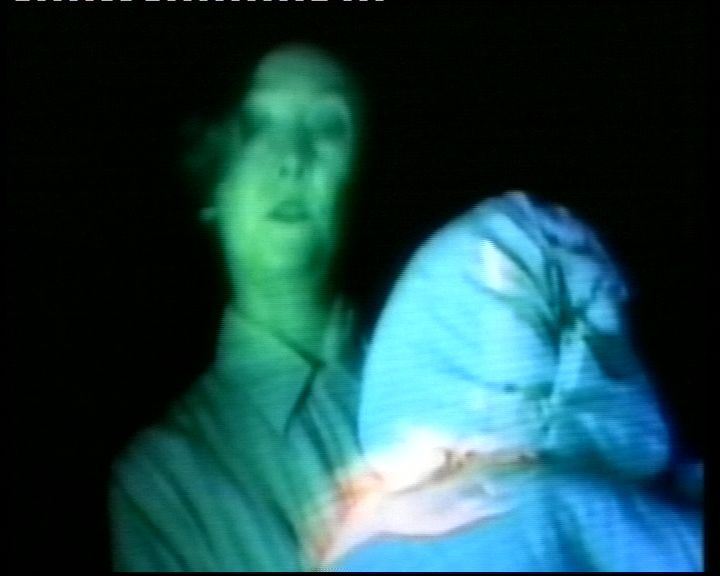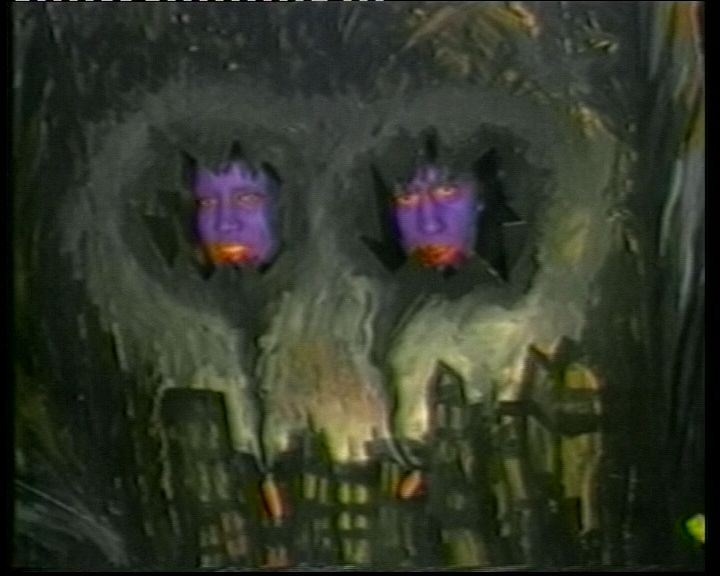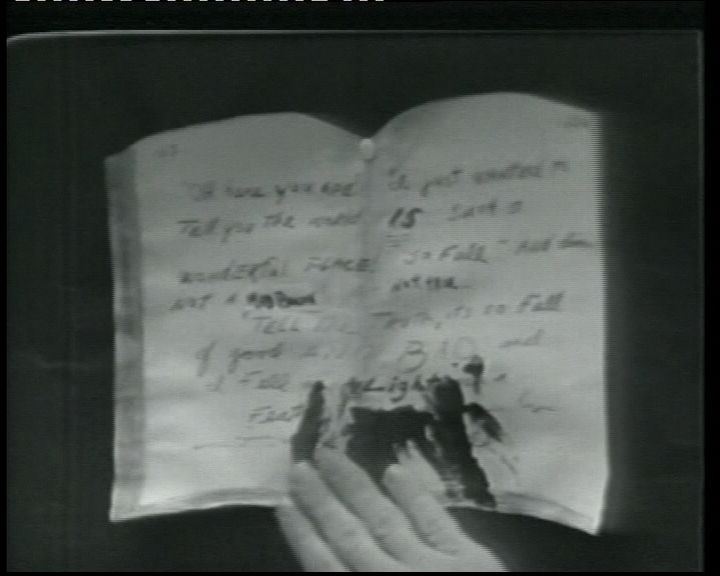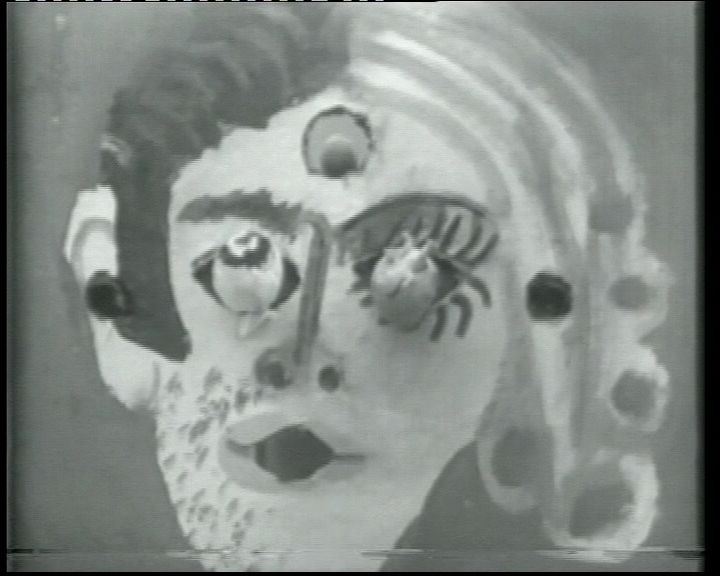Tony Oursler
Since the mid-seventies, Tony Oursler has created a vast oeuvre comprising installation, painting, sculpture, performance, and video. In his installations, figures of heads, puppets, and dolls are animated by video projections with a narrated voice-over. Prior to this, spanning a period of twenty years, the artist created a large production of videos characterized somewhere between the visionary and the hallucinatory.
Oursler’s videos form oblique and sinister narrations with often bizarre obsessive tones and atmospheres. They pay tribute to German Expressionist cinema and the vigorous Neo-Figurative painting of the late seventies and early eighties. The persistence of an unmistakable dark humor is mixed with mise en scène of a distinctive and theatrical artificiality.
A veritable miniature universe, created and painted by hand, mixed with scenes of animation and projections, forms the stage of Oursler’s personal narrative re-interpretation. Influenced by a post-punk sensibility, characterized by the presence of narrating voices often off-screen, and by a liking for disturbing sound collages, his production suggests an atmosphere of oneiric states or trances.
The playful and ironic approach to assembling heterogeneous materials from an enormous mass of cultural and subcultural artifacts is tied to an interest in those adolescent fantasies, dreams, and obsessions, at times also macabre and frightful, found in Western society.
An uninhibited penchant for forms of simulation and parody of cinema and electronic special effects often leads him to results that are immediately and ironically self-referential and recognizable in their ability to reveal the mechanisms of illusion. His themes and references range from an interest in psychotic states, sexual frustration, and alienation to forms of mania, hysteria, and violence through the fundamental dichotomies of Good and Evil, life and death.
In the late eighties, his growing interest in technology has led Oursler to investigate the most buried and repressed aspects of the human psyche and imagination so as to create real forms of social analysis and criticism. [F.B.]
List of Works
Selected Works, 1979
video, black and white, sound, 34 min. 20 sec.
Purchased with the contribution of the Compagnia di San Paolo
Diamond (Head), 1979
video, black and white, sound, 13 min. 52 sec.
In a vast assortment of objects and drawings filmed in close-up, images of vaguely identifiable characters—a head and other anthropomorphic figures—become visible.
Good Things and Bad Things, 1979
video, black and white, sound, 11 min. 51 sec.
This work is composed of a series of scenes similar to vignettes, in which faces and figures appear in succession, a hand indicates—and dirties—the pages of an open book, and a face is literally torn to pieces by six arms.
Life, 1979
video, black and white, sound, 9 min. 17 sec.
In a series of short “animated” scenes, we observe the labored growth of a small plant in front of a building and the disturbing destinies of some insects placed in small, transparent plastic tubes.
The Weak Bullet, 1980
video, color, sound, 12 min. 41 sec.
Purchased with the contribution of the Compagnia di San Paolo
In a painterly setting with dark and sinister shades, a bullet fired by small figures travels, entering other situations. The bullet kills a would-be suicide, straightens an antenna, and penetrates the body of a woman.
Grand Mal, 1981
video, color, sound, 22 min. 36 sec.
Purchased with the contribution of the Compagnia di San Paolo
Beginning with an image of a device in a phase of emergency, this video accumulates images that are particularly gloomy and expressionistic in a crescendo of anxieties addressing themes of sex and death, passing among visions of terrorizing metropolises and the Garden of Eden.
Son of Oil, 1982
video, color, sound, 16 min. 08 sec.
Purchased with the contribution of the Compagnia di San Paolo
In this video, the “machine” of the human brain is in crisis. Somewhere between signs of panic and hopelessness, Oursler depicts the story of a modern hero, played by an actor, who is obsessed with ghostly voices that bring him to the point of alienation, amidst scenes of urban and industrial decadence.
Diamond: The 8 Lights (Spheres of Influence), 1985
video, color, sound, 53 min. 47 sec.
Purchased with the contribution of the Compagnia di San Paolo
Produced parallel to the large multi-media installation of the same name, created for the Centre Pompidou in Paris, this video articulates a series of oneiric and often almost horrific scenes. The work shows human figures at the mercy of spirits and sinister presences. It alternates animated figures with the corporeal presences of actors immersed in dark and supernatural scenarios.
Sucker, 1987
video, color, sound, 5 min. 33 sec.
Purchased with the contribution of the Compagnia di San Paolo
Consecutively, this brief work shows a series of frightful images and situations that mix sacred images and iconography with visions of violent death and blood—all against pictorial backgrounds of unexpected beauty.
JoyrideTM, 1988
video, color, sound, 14 min. 23 sec.
Purchased with the contribution of the Compagnia di San Paolo
Created as a collaboration between the artist and the writer Constance DeJong, this video advances like a frenetic journey, as the title suggests, through experiences and discoveries in a sort of modern Odyssey of the American culture of sensationalism and consumerism.
ONOUROWN, 1990
video, color, sound, 45 min. 40 sec.
Purchased with the contribution of the Compagnia di San Paolo
Performed by actors, this video traces the wanderings of two patients who leave a psychiatric hospital. In having returned with a certain reluctance into the real world, Tony, Joe, and their dog Woody find themselves having to once again get used to everyday life and to the prospect of looking for a job and preparing their own food (besides having to keep a video-diary of their experiences). Produced in collaboration with Joe Gibbons, the video offers a series of situations of extravagant, almost dark humor, closely touching upon themes of solitude, health, abnormality, and death impulses.
Tunic (Song for Karen), 1990
video, color, sound, 6 min. 17 sec.
Purchased with the contribution of the Compagnia di San Paolo
Produced in collaboration with the experimental post-punk band Sonic Youth, this music video is dedicated to the tragic figure of a famous seventies American pop star, Karen Carpenter, and to her problems with anorexia.
Model Release, Par-Schizoid-Position, and Test, 1992
video, color, sound, 11 min. 44 sec.
Purchased with the contribution of the Compagnia di San Paolo
Model Release, 1992
video, color, sound, 3 min. 24 sec.
In this brief video, a female figure holds what appears to be a puppet. She recites legal texts, drawing a parallel among slavery, prostitution, and possession of the spirit through the power of mass media.
Par-Schizoid-Position, 1992
video, color, sound, 2 min. 53 sec.
Featuring Kim Gordon, the video shows the face of the performer superimposed over abstract backgrounds with a stream-of-consciousness narration.
Test, 1992
video, color, sound, 5 min. 23 sec.
Analogous to Par-Schizoid-Position, in Test the face of the performer—Karen Finley—is coupled with abstract backgrounds and free-association voice-over.












